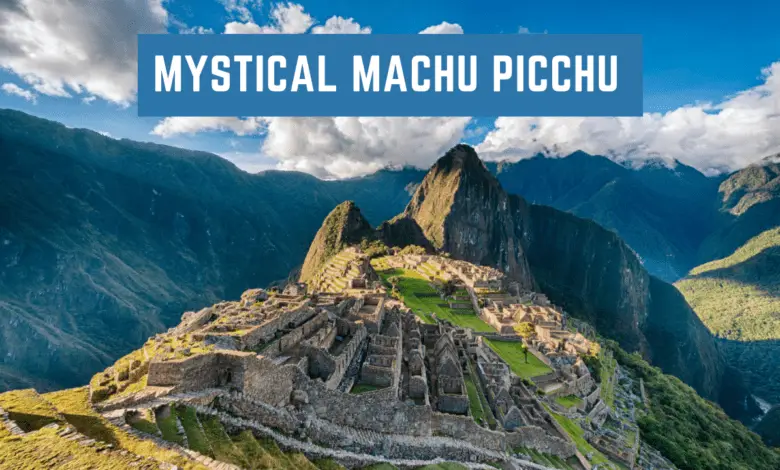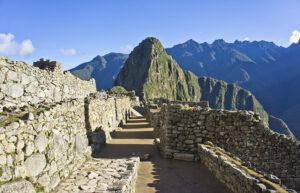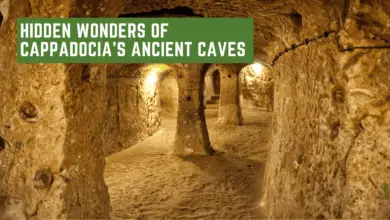Mystical Machu Picchu: Unraveling the Inca Civilization 🌄
Discover the Secrets of an Ancient Empire

Introduction
Nestled high in the Andes Mountains of Peru, Machu Picchu stands as a testament to the ingenuity and mystique of the ancient Inca civilization. This awe-inspiring archaeological site, perched on a ridge nearly 8,000 feet above sea level, continues to captivate the imagination of travelers and historians alike.
In this blog post, we embark on a journey to explore the enigmatic world of Machu Picchu, a place where history, culture, and natural beauty converge in a breathtaking display of human achievement. As we unravel the mysteries of this Inca citadel, we will gain insights into the remarkable civilization that built it, discovering how they harnessed their environment and crafted an enduring legacy that still resonates with us today.
The Inca Civilization: An Overview
Historical Context: Emergence and Expansion of the Inca Empire
The Inca civilization, nestled in the rugged Andes Mountains of South America, is one of the most remarkable and enduring cultures in history. Its rise to power began around the early 15th century when the legendary Inca leader Pachacuti Inca Yupanqui embarked on a mission to unite the numerous Andean tribes.
Over the course of a century, the Inca Empire expanded dramatically, encompassing vast territories stretching from modern-day Ecuador to Chile. This rapid expansion was facilitated by a highly organized administrative system, impeccable engineering skills, and a shared cultural identity.
At the heart of the Inca Empire was Cusco, the capital city, which served as the political, religious, and cultural epicenter of their civilization. The Inca road network, spanning thousands of miles, connected this imperial hub to the farthest reaches of their empire, aiding in communication, trade, and governance.
Key Achievements and Characteristics of the Inca Civilization
- Architecture and Engineering: The Inca civilization is renowned for its incredible architectural feats. The construction of Machu Picchu, an intricate and awe-inspiring mountaintop citadel, stands as a testament to their engineering prowess. The precision of their stonework, without the use of mortar, remains a marvel of ancient construction.
- Agricultural Innovations: To support their growing population, the Incas developed advanced terracing systems, such as the famous Moray agricultural terraces. These ingenious designs allowed them to cultivate a variety of crops, adapting to the diverse climates within their empire.
- Social Organization: The Incas were experts in social and political organization. Their society was structured into a hierarchical system, with the emperor at the top. A network of local administrators, called “curacas,” helped maintain control and facilitate resource distribution.
- Religious Beliefs: The Incas had a polytheistic religion, worshipping a pantheon of deities, with Inti, the sun god, holding a central place. Their religious practices often involved elaborate ceremonies, sacrifices, and rituals performed by priests and shamans.
- Record Keeping: The Inca civilization utilized a unique system of record-keeping called “quipu.” Knots tied in colorful cords were used to encode information about the empire’s resources, population, and more.
- Textiles and Art: Inca textiles are renowned for their intricate designs and vibrant colors. These textiles served as a form of communication, conveying social status and cultural identity.
The Inca civilization, though eventually conquered by Spanish conquistadors led by Francisco Pizarro in the 16th century, left an indelible mark on history. Today, their legacy endures through their breathtaking archaeological sites, cultural traditions, and the enduring fascination they inspire worldwide.

The Construction of Machu Picchu
Architectural Marvels: Layout, Buildings, and Terraces
Machu Picchu’s layout is a masterpiece of urban planning. It is divided into two main areas: the agricultural sector and the urban sector. The agricultural terraces, a hallmark of Inca engineering, cascade down the steep slopes, serving both agricultural and structural purposes. They prevented erosion, provided flat surfaces for cultivation, and stabilized the mountain’s foundation.
The urban sector boasts remarkable stone constructions that blend seamlessly with the natural landscape. Notable structures include the Temple of the Sun, the Intihuatana stone (a ritual stone associated with astronomy and timekeeping), and the Royal Tomb. These buildings exhibit precise stone-cutting techniques, featuring massive stones that fit together with astonishing precision, all without the use of mortar.
Theories on the Purpose of Machu Picchu
The purpose of Machu Picchu has intrigued researchers for decades. While no definitive answer exists, several theories have emerged. One prevailing theory suggests that it served as a royal estate or retreat for the Inca emperor Pachacuti Inca Yupanqui. Its remote location and breathtaking vistas may have provided an ideal setting for relaxation and spiritual retreats.
Others believe that Machu Picchu had astronomical or religious significance. The Intihuatana stone, for instance, is thought to have been used for astronomical observations and rituals.
Engineering Feats: Transportation of Massive Stones and Terracing Techniques
The transportation of massive stones to Machu Picchu remains a marvel of Inca engineering. Stones weighing several tons were quarried in nearby locations and transported to the site, often across rugged terrain and steep slopes. The precise methods of stone transport remain a subject of debate among scholars, with theories ranging from the use of logs, ramps, and human labor.
The construction of the terraces at Machu Picchu required innovative engineering techniques. The Incas used a combination of retaining walls, drainage systems, and carefully constructed layers of soil and gravel to create these terraces. This allowed for efficient agriculture in the challenging mountain environment, showcasing the Inca’s deep understanding of agricultural engineering.
Mysteries and Legends of Machu Picchu
As one of the world’s most enigmatic archaeological sites, Machu Picchu is steeped in mysteries and legends that continue to intrigue and mystify both scholars and visitors. From its abandonment to its spiritual significance and the enduring allure of Inca mythology, Machu Picchu is a treasure trove of captivating stories.
Theories about the Abandonment of Machu Picchu
One of the greatest mysteries surrounding Machu Picchu is the question of why it was abandoned by the Inca civilization. Various theories have been proposed, but none have been definitively proven.
Some suggest that it was deserted due to the Spanish conquest and the diseases they brought, leading to a decline in the population. Others posit that it was left behind as a strategic move by the Incas to avoid detection by the conquistadors. The exact circumstances of its abandonment remain shrouded in history, adding an air of intrigue to the site.
Spiritual Significance: Intihuatana Stone and Alignment with Celestial Events
At the heart of Machu Picchu’s spiritual significance lies the Intihuatana stone, a ritual stone associated with astronomy and timekeeping. In Quechua, the native language of the Incas, “Intihuatana” means “hitching post of the sun.” It is believed that this stone served as an astronomical observatory and a place for performing ceremonies related to the sun and other celestial events.
Machu Picchu’s layout is also thought to have astronomical alignments, with some structures aligning with the movements of celestial bodies. These alignments reflect the Inca’s deep connection to the cosmos and their belief in the interconnectedness of the physical and spiritual worlds.
The Enduring Allure of Inca Mythology
The Inca civilization left behind a rich tapestry of myths and legends that continue to captivate the imagination. These myths often revolve around nature, gods, and the origins of their people. The story of Viracocha, the creator deity, and the legends of the founding of Cusco, the capital of the Inca Empire, are just a few examples of their enduring mythology.
Inca mythology is also intertwined with the natural world, with sacred landscapes, animals, and plants playing significant roles in their stories. Even today, these legends are celebrated in festivals and rituals in the Andean regions, keeping the spirit of the Inca civilization alive.
Rediscovery and Preservation of Machu Picchu
Machu Picchu’s rediscovery by Hiram Bingham in 1911 marked the beginning of a global fascination with this ancient Inca citadel. Its subsequent recognition as a UNESCO World Heritage site and ongoing conservation efforts have helped protect this cultural treasure. Responsible tourism is crucial to safeguarding both Machu Picchu’s historical integrity and its fragile ecosystem.
Hiram Bingham’s Expedition and Global Fascination
In 1911, American historian and explorer Hiram Bingham stumbled upon Machu Picchu during an expedition in the Andes. The sight of the well-preserved citadel, hidden for centuries beneath the dense jungle growth, captured the world’s imagination. Bingham’s photographs and accounts of his journey sparked international interest, drawing scholars, adventurers, and tourists alike to the site.
UNESCO World Heritage Status and Conservation Efforts
In 1983, Machu Picchu was designated as a UNESCO World Heritage site, recognizing its cultural and historical significance. This status has prompted extensive preservation efforts. Strict guidelines are in place to protect the site from erosion, deforestation, and unregulated tourism. Conservationists work diligently to maintain the integrity of Machu Picchu’s architecture and infrastructure.
Check out the most detailed review of Machu Picchu on Wikipedia.
Responsible Tourism and Preservation of the Ecosystem
As Machu Picchu’s popularity has grown, so too have concerns about its preservation. Responsible tourism practices are essential to safeguarding both the site and its fragile ecosystem. Visitor numbers are now limited, and strict regulations are enforced to minimize the impact of foot traffic on the archaeological structures and surrounding environment.
Efforts are also underway to address the challenges posed by waste disposal, erosion, and deforestation in the region. Sustainable tourism initiatives seek to educate visitors about the importance of respecting Machu Picchu’s natural surroundings and cultural heritage.
Additionally, the Peruvian government and conservation organizations are collaborating on projects to protect the biodiversity of the Machu Picchu Historical Sanctuary, which encompasses the citadel. Preserving the diverse flora and fauna within this area is vital to maintaining the delicate ecological balance of the region.
Visiting Machu Picchu Today
Machu Picchu, the awe-inspiring archaeological wonder nestled in the Andes Mountains of Peru, beckons travelers from around the world. To make the most of your visit, it’s important to be well-prepared with practical tips, embrace the magic of this ancient site, and practice responsible tourism.
Practical Tips for Travelers
- Book Tickets in Advance: Machu Picchu has a daily visitor limit, so it’s essential to book your tickets well in advance, especially if you plan to hike the Inca Trail.
- Arrive Early: Beat the crowds and experience the tranquility of Machu Picchu by arriving early in the morning when the site opens. Sunrise views are particularly spectacular.
- Pack Essentials: Wear comfortable walking shoes, dress in layers for varying weather conditions, and bring a hat, sunscreen, insect repellent, and a refillable water bottle. You’ll also need your passport for entry.
- Guided Tours: Consider hiring a local guide who can provide valuable historical and cultural insights during your visit. Guides can enhance your understanding of the site’s significance.
- Respect Regulations: Follow the site’s rules, such as not climbing on the ruins, staying on designated paths, and refraining from touching or leaning on the ancient stones.
Experiencing the Magic of Machu Picchu
- Take Your Time: Machu Picchu is a place to savor. Allow plenty of time to explore, soak in the stunning views, and absorb the spiritual atmosphere.
- Visit Huayna Picchu or Machu Picchu Mountain: For even more breathtaking views, consider hiking to the top of Huayna Picchu or Machu Picchu Mountain. These hikes offer a different perspective of the site.
- Enjoy Moments of Solitude: While Machu Picchu can be busy, there are opportunities to find quieter spots. Take a moment to sit and contemplate the awe-inspiring surroundings.
Ethical Considerations for Responsible Tourism
- Leave No Trace: Respect the environment by not littering and disposing of your waste properly. Follow the principles of “leave no trace” to minimize your impact on the ecosystem.
- Support Local Communities: Patronize local businesses, stay in locally-owned accommodations, and purchase handicrafts from local artisans. This helps the surrounding communities benefit from tourism.
- Cultural Respect: Learn about and respect the traditions and customs of the local Quechua people. Seek permission before photographing individuals and their property.
- Avoid Wildlife Disturbance: Do not approach or disturb wildlife. Keep a safe distance and observe animals in their natural habitat without causing stress or harm.
- Responsible Photography: Be mindful when taking photographs, especially in sensitive or sacred areas. Flash photography may be prohibited in some places.
FAQs
- What is the best time to visit Mystical Machu Picchu?
The best time to visit is during the dry season, from May to October, to enjoy clear skies and pleasant weather.
- Is it safe to hike Huayna Picchu?
While it offers incredible views, the Huayna Picchu hike can be challenging and is not recommended for those with a fear of heights.
- Can I explore Machu Picchu independently?
Yes, you can explore it on your own, but hiring a guide can provide valuable insights into its history and significance.
- What is the altitude of Machu Picchu, and how can I acclimatize?
Machu Picchu is around 2,430 meters (7,970 feet) above sea level. Spend a day in Cusco to acclimatize before visiting.
- Are there accommodations near Machu Picchu?
Aguas Calientes, the nearest town, offers various lodging options for travelers.
- How can I obtain tickets to Machu Picchu?
You can purchase tickets online in advance through the official website or in-person in Aguas Calientes.
Conclusion
Machu Picchu, with its intricate stone structures and breathtaking mountainous backdrop, serves as an enduring symbol of the Inca civilization’s remarkable achievements. As we conclude our journey through this mystical site, we are left with a profound appreciation for the ingenuity, spirituality, and resilience of the Inca people.
Machu Picchu’s mysteries, legends, and ongoing research continue to fuel our curiosity and fascination, reminding us of the profound connection between the past and the present. This iconic archaeological wonder not only beckons travelers from around the globe but also beckons us to unravel the secrets of our shared human history and the enduring allure of civilizations that once thrived in the most extraordinary of places.
Up Next
Street Art of Barcelona’s Gothic Quarter 🏙️ | Vibrant Urban Murals and Graffiti



Facebook Comments